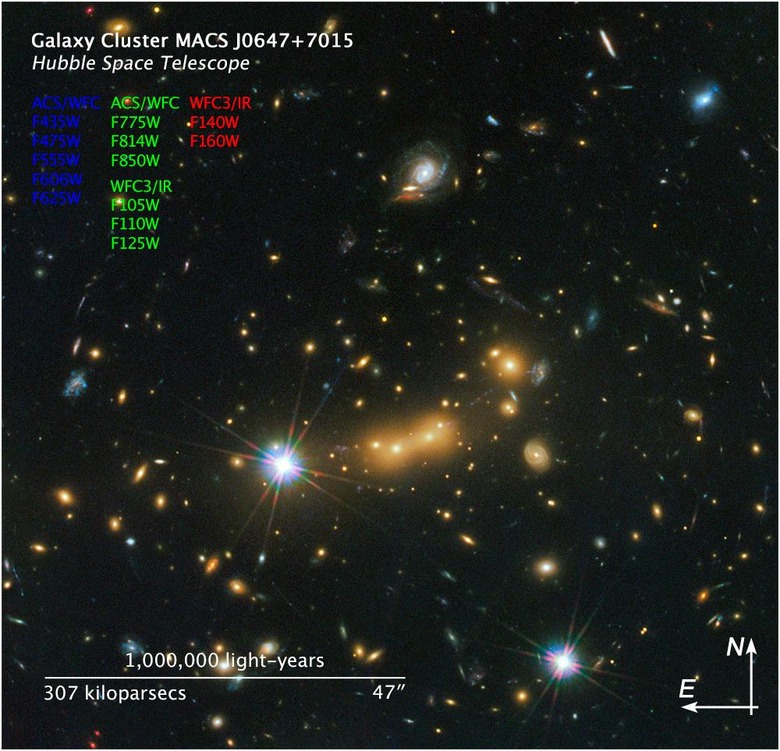Hubble Spots The Final Frontier
This week scientists have published images of the faintest and earliest known galaxies in the Universe. These are the frontiers of the Big Bang, the edges of our Universe – beyond which, we have no knowledge. Some of the galaxies spotted in these galaxy clusters were formed just 600 million years after the Big Bang. To put that in perspective, our own Solar System is thought to have been formed between 8.5 to 9 BILLION years after the Big Bang – the galaxy clusters NASA and the ESA have spotted here are far, far older than we are.
Hakim Atek of the Ecole Polytechnique Fédérale de Lausanne, Switzerland, leads the team that've discovered these galaxy clusters. Another team member, Johan Richard from the Observatoire de Lyon, France, confirms that these galaxies are remarkable: "the faintest galaxies detected in these Hubble observations are fainter than any other yet uncovered in the deepest Hubble observations."
As light travels through space, so too are we viewing galaxies that existed back in time. Many of the stars in these galaxies spotted by Hubble have long since blinked out – we won't know when they've died until 12 billion years after they've done so. That's how long it takes from light in these galaxies to reach our Earth.
One of the galaxy clusters this project focused on goes by the name MACS J0647+7015 (or MACS J0647 for short). In the video you see here, you'll zoom in on this galaxy in the span of around 30 seconds.
The MACS0647-JD galaxy is currently the farthest known galaxy in the universe to date, and is being observed just 420 million years after the big bang. That's just 3-percent of the life of the entire Universe which is currently 13.7 billion years old.
Our observed age of the galaxy shows it very, very young. This galaxy is less than 600 light-years wide. Compared to other "typical" galaxies of that epoch, this galaxy is small. Other typical galaxies of that epoch are around 2,000 light-years wide, while our own Milky Way is 150,000 light-years wide.

ABOVE: Compass and Scale Image of MACS J0647+7015.
"This object may be one of many building blocks of a galaxy," said Dan Coe of the Space Telescope Science Institute, lead author of the study.
"Over the next 13 billion years, it may have dozens, hundreds, or even thousands of merging events with other galaxies and galaxy fragments."
You can learn more about these findings in the release "NASA Great Observatories Find Candidate for Most Distant Galaxy Yet" as hosted by HubbleSite. This study is lead by Dan Coe and is accompanied by news release number STScI-2012-36.
